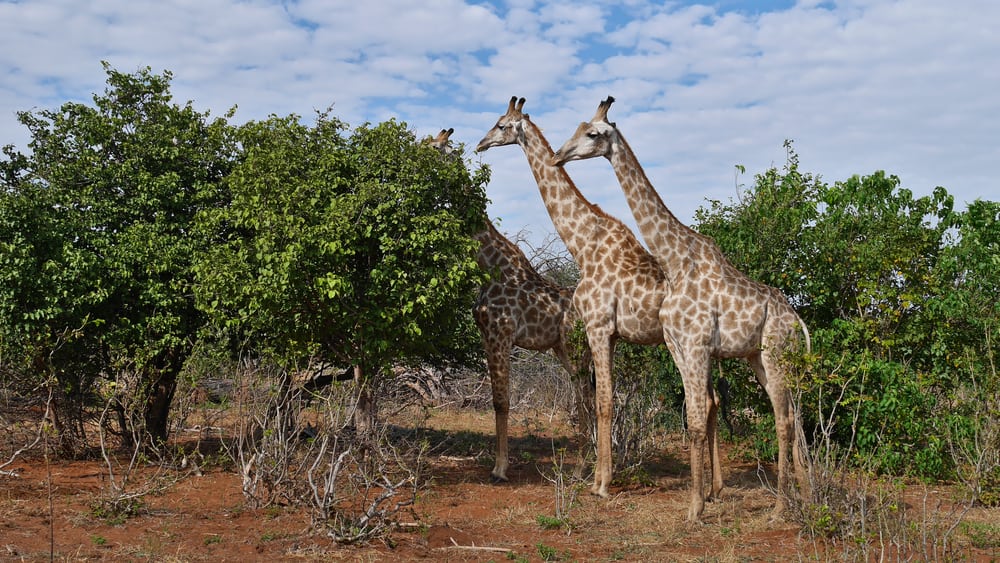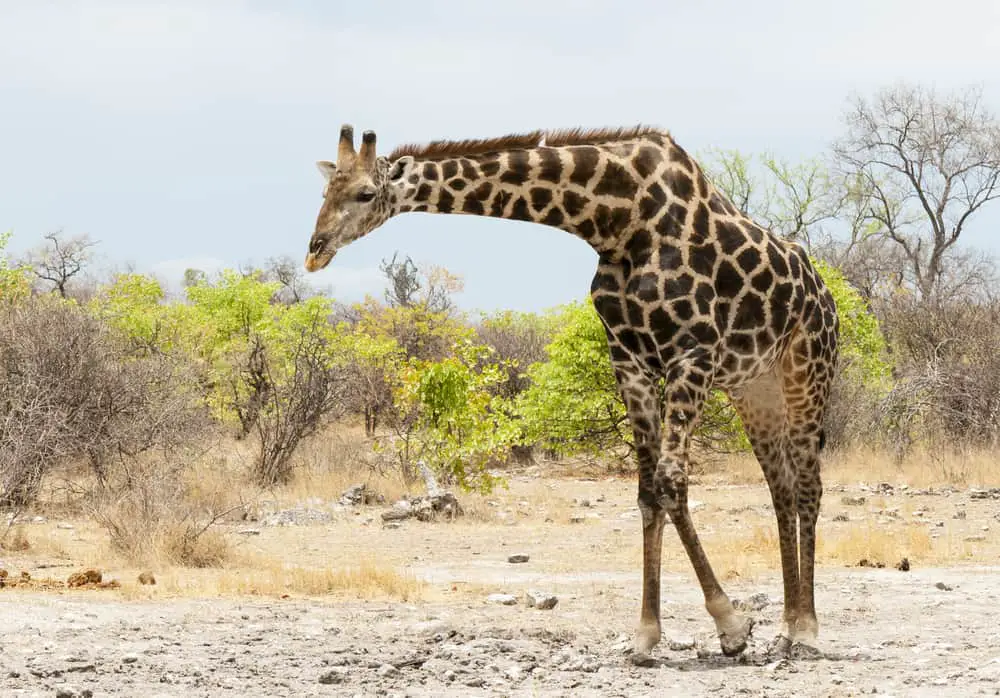Giraffes, the world’s tallest mammal and a symbol of Africa, are an integral part of many ecosystems. As such, it is important to understand their lifecycle in order to comprehend how they interact with other species within these environments.
This article will examine the birth, development and death stages that every giraffe must go through during its life. Additionally, this article will discuss factors which may influence the length and quality of each stage of a giraffe’s lifespan.
The gestation period for giraffes can vary from 14-15 months depending on environmental conditions as well as nutrition levels amongst other things. Giraffes typically give birth standing up so calves often fall over 2 meters onto the ground immediately after being born.
Calves then spend much of their early days following their mother closely while nursing regularly and gradually developing strength until they reach maturity at around 4 years old.

Gestation
The giraffe gestation period is a remarkable and awe-inspiring event that captivates those with an appreciation of nature.
The average length of the gestational cycle for these majestic creatures is 14 to 15 months, during which time much happens in order for them to begin life as we know it.
Giraffes are social animals that form bonds within their herd and develop relationships between mothers, calves, and other members of their respective herds.
As such, they require ample amounts of space and opportunity to roam, as well as access to dietary needs including fresh foliage from trees and shrubs.
During this critical stage, pregnant females must remain healthy so that they can nourish their growing fetuses until birth.
To ensure optimal health during pregnancy, female giraffes often seek out mineral licks while also supplementing their diet with various forms of vegetation to meet nutritional demands.
After nearly a year and a half of development and preparation, the calf finally arrives into the world ready to explore its surroundings alongside its family unit.
Birth
Giraffe gestation is a lengthy process, lasting anywhere from 14 to 15 months. After this period of preparation and development, the newborn calf emerges ready for its first moments in the world.
The birth weight of giraffes is typically between 100-150 pounds, with some newborns weighing as much as 200 pounds. At first glance, they appear almost fully developed – their long legs help them stand on their own mere minutes after emerging from their mother’s womb.
The calves are immediately able to begin nursing, thanks to milk production which begins before they are born. Within 24 hours of being born, most calves can be found grazing alongside their mothers.
They have instinctive protective behaviour such as lying still when confronted by danger or running away if approached too closely. As well, female giraffes form strong bonds with other adult females who often assist in raising the young calves together.
This communal support system provides an essential foundation for the calves’ continued growth and maturation into adulthood.
Early Development
Giraffe calves are born after a gestation period of up to 15 months and typically weigh around 100 pounds at birth.
The young giraffes quickly learn how to stand within 30 minutes and will nurse for the first several weeks, often nursing from multiple females in their group or herd. During this time, they become accustomed to their habitat preferences: savannas, open woodlands, grassy plains with plenty of trees available for shade during hot days and protection from predators.
The early development stage is characterized by rapid growth as well as developing strategic behaviors such as flight responses when threatened.
Giraffes live in loose herds that may contain anywhere between five to twenty individuals depending on the availability of resources like food and water; these herds also serve as social units where calves can interact with other members and practice vital skills necessary for survival in the wild. Furthermore, calves develop an independent feeding behavior over time through trial-and-error exploration of different plant species found in its environment.
During this phase, the calf’s coat color gradually changes from orange/reddish brown to adult colors (which depends on subspecies).
They begin to browse alongside adults at four weeks old, but still depend highly upon milk until six months old; eventually they reach full size at 2 years old while weaning continues throughout 3–4 years.
In addition, communication begins during this stage with high-pitched contact calls being used between mother and offspring along with some low pitched snorts towards potential threats or intruders entering into the territory.
Giraffes’ Predators Exposed: Unveiling the Natural Foes
Maturity
At maturity, giraffes reach their full height and have solidified social bonds. This is a crucial stage for the species as it lays down important behavioral foundations which are integral to its survival.
Although some may point out that diet is an equally significant factor in the lifecycle of giraffes, it must be noted that proper socialization and communication within herds has enabled them to successfully survive long periods of food scarcity.
This period of development sees adult males becoming increasingly territorial, while females establish hierarchical dominance among themselves. Giraffe calves continue to eat herbivorous diets consisting mainly of leaves from trees such as acacia and mimosa but slowly transition into more specialized diets depending on their environment, allowing them to maximize nutrient intake with minimal effort.
With increased mobility also comes greater energy expenditure resulting in higher water requirements; this along with access to fresh grass means that mature individuals are often found near permanent bodies of water. All these factors combined help ensure the successful maintenance of giraffe populations over time.

Senescence
Once a giraffe has matured, the aging process begins. As in all species, senescence brings about physical and mental changes that affect an individual’s lifestyle, health and wellbeing.
For example, as they age, giraffes may experience reduced mobility due to joint stiffness; weakened eyesight can lead to difficulty foraging or even cause them to wander into dangerous areas; hearing loss is also common in older individuals who struggle with detecting predators from afar; their teeth become worn down and reduce their ability to feed on hard-shelled fruits.
In addition, there are psychological effects of aging such as increased irritability and decreased socialization. Overall, these physical and mental changes make it increasingly difficult for elderly giraffes to survive without assistance from younger members of the herd.
While most die of old age within 20 years after reaching maturity – depending on the environment – some lucky few reach up to 25 years old before succumbing to natural causes related to senescence. It is therefore important that we understand the impacts of aging so we can help provide better care for our beloved long-necked friends throughout their lifetime.
Conclusion
The giraffe lifecycle is an awe-inspiring journey of growth and change.
From the time a young calf first takes its first steps to when it stands tall among its peers, there are remarkable changes in behavior, size, and appearance.
As they reach maturity, these majestic creatures become a sight to behold with their graceful movements and regal bearing.
Although their life span is relatively short compared to other mammals, the later years can still be filled with moments that bring joy to both observer and fellow herd members alike.
In the end, however, the cycle of life comes full circle as nature’s most stately animal passes from this world into legend.
Just like constellations burning brightly in the night sky, memories of giraffes live on long after their departure – a testament to their beauty and strength for generations to come.

